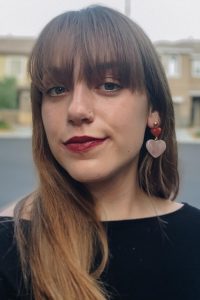The University of Utah Department of Neurology partnered with the Danielle Byron Henry Migraine Foundation to establish a headache outreach program at the U. The Headache School offers individuals suffering from chronic migraines and their families assistance in both alleviating and coping with the disease.
The Danielle Byron Henry Migraine Foundation was established in March, 2016, by Danielle’s parents, Dan and Diane Henry, and her sister Elizabeth Henry Weyher, in honor of Danielle, who struggled with migraines until she took her life in 1999 when she was 17 years old.
In response to the tragedy, the family decided to bring awareness and understanding to the disease while helping others who suffer from it. The foundation’s mission is to provide support and access to treatment for those struggling with migraine disease, especially young adults and children, like Danielle.
“My father was originally a family practitioner, but through the course of caring for my sister and then in the years that followed, he really increased his practice to focus solely on headache and migraine patients,” Weyher said. “He’s seen how this illness has devastated lives, and he really felt that there was a need to first raise awareness so that more people understood what it was, that it’s not just a headache — it’s a neurological disease. You have light and sound sensitivity: Some people’s vision either blurs or totally goes away in one eye, some people have stroke-like symptoms when they have a migraine or nausea. It affects your quality of life every day.”
In January, 2017, Dan Henry got in touch with Kathleen Digre, U neurology professor and president-elect of the American Headache Society, to establish the Headache School. The foundation gave a grant to the U, and Digre and her department provided the space and speakers for events.
Now, on every second and fourth Tuesday of the month, two-hour sessions are hosted by migraine and headache specialists, including members of the U’s Neurology Department. These sessions are primarily educational. The first hour is a question and answer period with experts and it is often paired with complementary treatments that are meant to alleviate migraine symptoms, like acupuncture, biofeedback, meditation and hypnotherapy. The remaining hour is dedicated to a restorative yoga class.
“Living with migraines for 18 years sometimes feels like a prolonged death sentence,” said Amy Oglesby, a frequent Headache School participant. “Until I found Dr. Henry, I had little to no hope that the severity of my pain would ever subside. Headache School has broadened my understanding of the disease and taught me invaluable techniques for the management and prevention of migraines.”
The foundation also sponsors professionally-moderated support groups for individuals between ages 13 and 19 with chronic migraines.
Although the Headache School just kicked off this year, the foundation is already looking to expand.
“We just started a support group for adolescents sponsored by our foundation, and we would like to add more, especially for parents of children with migraines,” Weyher said. “Our ultimate goal is to build a comprehensive headache center in Salt Lake City.”
@jacqmumford



